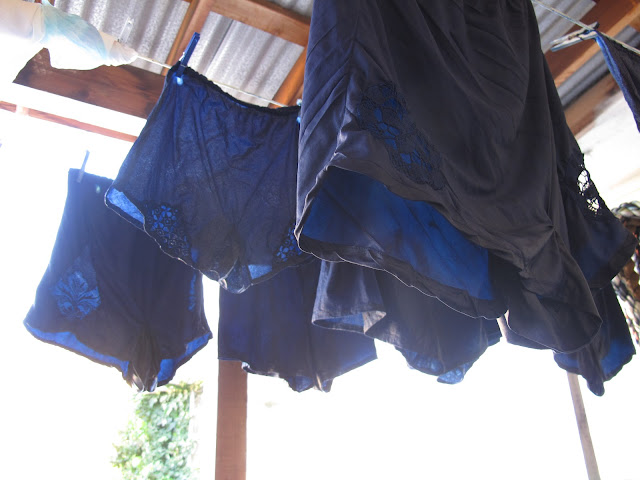12.05.2012
10.13.2012
9.15.2012
8.31.2012
7.22.2012
7.08.2012
Twin Pond
6.26.2012
INDIGO
SUPER INDIGO LOVELYWARE on THE VELVET COUCH BACK IN CALIFORNIA.
JONI MITCHELL ON THE TURNTABLE, LADIES C'mon.
fingerpinched moons on our hemlines.
6.24.2012
HISTORY OF BLOOMERS
A: Censored Cilice; Wool, Silk, Human Hair, Metal Zipper. Indigo + Hand Ground Resist
B: Live Free or Die; Cotton, Lye
C: Love's Labors Lost; Indigo, Antique Lace, Pinched Resist Hems.
5.15.2012
ENTROPIC MENDING
Entopic Mending is a deconstructive incantation and a
systematic reverse of productive process(es) as a method of repair.
Items that require Entropic Mending cannot be repaired by
replacement in part or by the addition of an able component. In some instances,
when we mend by addition, we are only placing a veil over the unfortunate part
of the object, in which case the affected area may fester and continue to fall
into malaise.
Entropic
mending repairs the essential part of an object. It may be helpful to think of
entropic mending as reparation to the “soul” of an object. If you think about
it, it is easy to recall heavy objects that could easily be liberated through
the entropic process.
Entropy
is the quantifiable amount of energy disseminated thermodynamically. Entropy
measures the amount of energy change within an object upon unforeseen motion.
Entropic mending aims to disperse the greatest possible amount of energy from a
specific location. In general, entropy is only used to describe spontaneous
chemical and physical motion. However, it is entirely possible to apply the
principles of Entropy (and the laws of thermodynamics) to the craft of mending.
In
order to entropically mend an afflicted object, one must consider the
individual characteristics of the object at hand and the circumstances behind
its failure. Here are some factors to take into consideration as you begin to
mend entropically:
- How was
the object originally assembled? Can this process be reversed?
- What are
the ingredients of the object? Are there counter-solutions that might aid
you in its dissolution? (ex: the counter-solution to zinc is hydrochloric
acid; the counter-solution to paper is water, but sandpaper can be used as
a substitute.)
- From whom
did the object originate? (And what is their location?)
- What is
the fastest way to disperse the essence of the object across the widest
possible area? (This will allow for the most thorough liberation of the
energy)
5.01.2012
4.01.2012
Subscribe to:
Comments (Atom)


























